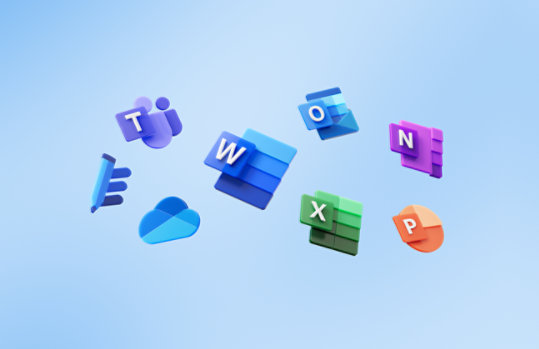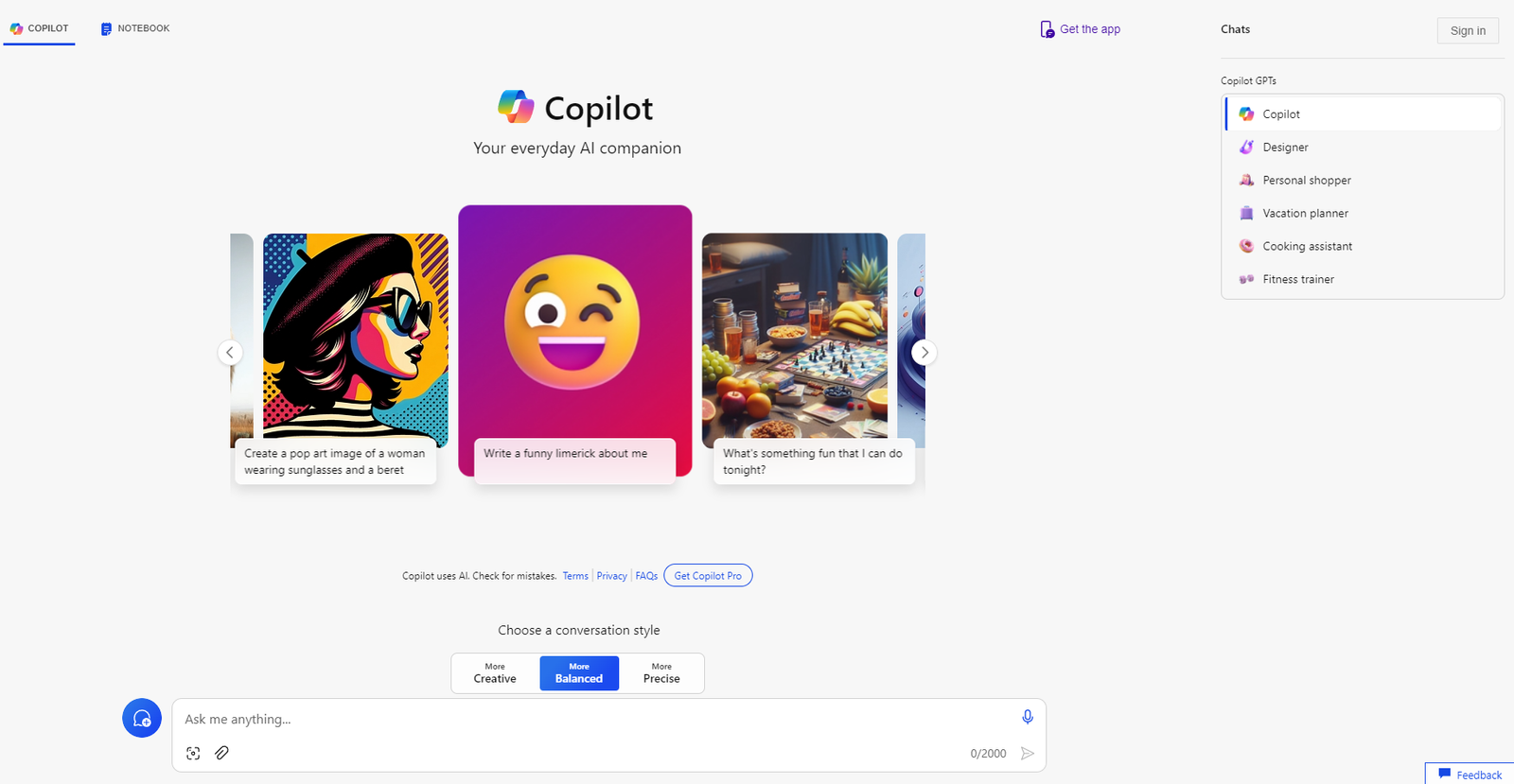Microsoft 365 from Microsoft is the latest, most innovative productivity suite in relation to solutions to all communication, collaboration, and productivity needs, from individual to team to organizational levels. It puts together each Office application with traditional powerhouses like Word, Excel, and PowerPoint, as well as leading cloud-based solutions: OneDrive, Teams, and SharePoint. This is how Microsoft 365 metamorphoses the modern workplace into a workspace, a classroom into an educational hub.
What’s different about this suite is that it has combined all the favorite, most powerful tools for productivity with the best of cloud services and advanced security features. Regularly updated and integrated with AI, it allows for not just an updated user experience but proactive tools in data, collaboration, and security management.

Microsoft 365 Components
Microsoft 365 includes several software and tools for both office and teamwork, let’s analyze the most used ones.
Word: Document Creation
Microsoft Word remains the gold standard of word processors, offering advanced tools for document creation. In addition to basic formatting, Word includes features such as layout control, reviewing and tracking changes, inserting comments, and creating indexes and bibliographies. Real-time collaboration allows multiple users to work on the same document at the same time, improving teamwork efficiency.
Excel: Powerful Data Analysis
Excel goes far beyond spreadsheet management, providing advanced tools for data analysis and visualization. With features such as pivot tables, forecasting tools, and the ability to perform complex analysis with Power Query and Power Pivot, Excel is indispensable for those working with numerical data. The collaboration feature allows you to share and work on spreadsheets with colleagues in real time.
PowerPoint: Slide and Presentations
PowerPoint is the ultimate presentation tool, enabling users to create visually impactful slides. With a wide range of templates, animated transitions, and the ability to incorporate multimedia, PowerPoint makes it easy to communicate ideas effectively and professionally. Presenter mode and annotation features further enhance live presentations.
Outlook: Integrated Email and Calendar Management
Outlook is more than just an email client; it is a comprehensive tool for managing communications and commitments. In addition to email management, it offers an integrated calendar for appointments and meetings, task manager, and contacts. Smart features such as priority inbox and quick response suggestions help you effectively manage your workday.
OneDrive: Cloud Storage and Sharing
OneDrive offers a secure and accessible cloud storage solution that allows you to save, share and access files from any device. Automatic synchronization ensures that documents are always up-to-date, while sharing options facilitate collaboration on shared projects. Advanced security features protect sensitive data.
Teams: Hub for Team Collaboration
Teams has quickly become the hub for team collaboration and communication, integrating chat, video calling, file sharing, and app integration into a single platform. Virtual meetings, team channels for organizing discussions, and real-time file collaboration make it easy to stay connected and productive, regardless of distance.
SharePoint: Collaboration and Content Management
SharePoint enables organizations to create internal Web sites for sharing information, managing documents and fostering collaboration. With content management features, custom search and integration with other Microsoft 365 apps, SharePoint is a powerful platform for organizing enterprise resources and cross-departmental collaboration.
Each Microsoft 365 app is designed to integrate seamlessly with the others, providing a smooth and cohesive user experience. Whether working on a Word document, analyzing data in Excel, presenting in PowerPoint, managing email in Outlook, storing files in OneDrive, communicating in Teams, or managing content in SharePoint, Microsoft 365 provides the tools to tackle a wide range of work and productivity tasks, all within a single ecosystem.
About Copilot
But the potential of this suite does not end there, let’s talk about Copilot, the virtual assistant based on Artificial Intelligence.
Microsoft 365 Copilot is a tool designed to improve productivity and efficiency in the daily work of Microsoft 365 users, which includes applications such as Word, Excel, PowerPoint, Outlook and others. It relies on advanced artificial intelligence techniques to assist users in creating content, analyzing data, preparing presentations, and managing emails more intuitively and quickly.

Some of the best features of office work when using Copilot are creating content in Word with help that may involve synthesizing text from short prompts or summarizing the text. For more advanced data analysis of Excel, there are automatically generated formulas, charts, and insights. Using PowerPoint, create dynamic presentations and optionally increase the visual impact with recommendations for the layout and design. Also, intelligence in the management of your emails with Outlook includes features that assist a user in responding quickly to mail and summarizing lengthy conversations. Last, the function of letting teams work together in a series of creativity and deliver the idea in the form of a meeting or project plans.
Driven with artificial intelligence, Copilot grows from the user’s interactions to fit its functionality with the user’s work habits, in reflection for a more personalized user experience.
In response to user feedback, Microsoft has implemented several new features that make Copilot even more versatile and easy to use. Users can now leverage advanced commands to search files, transform text into tables in Word, and effectively summarize long email threads, making it easier to manage communication and analyze data. In addition, Copilot’s integration into applications such as Microsoft Loop and Whiteboard, as well as into Teams, PowerPoint, and Excel functionality, has been improved, further expanding the virtual assistant’s capabilities to support a wide range of work tasks. These updates not only reflect Microsoft’s commitment to refining the tools available to users but also demonstrate the company’s focus on responding to the specific needs of users by continuously improving the experience of working with AI.
Concerning Criticism about Microsoft 365
Criticism of Microsoft 365 encompasses concerns over its reliance on stable internet connections, the cost implications of its subscription-based pricing, and compatibility issues with older systems. Frequent updates, while introducing new features, can also disrupt users resistant to change, and the model of software as a service means users never truly own the software, dependent entirely on Microsoft’s ongoing support.
Beyond Microsoft 365, broader critiques of Microsoft have touched on its historical stance towards software piracy and open source, with accusations of using copyright enforcement and patent concerns strategically to maintain its market position. Additionally, Microsoft’s practices around software bundling and licensing have been criticized for limiting consumer choice and fostering a “Windows tax.” These criticisms reflect both the functional challenges of using Microsoft 365 and broader concerns about Microsoft’s corporate strategies.
Conclusion
Microsoft 365 represents a significant advancement in productivity software, combining traditional and modern tools within a cohesive ecosystem to enhance the user experience. While it faces certain criticisms, its continuous updates and the addition of AI-powered features like Copilot demonstrate Microsoft’s dedication to innovation and responsiveness to user feedback, positioning Microsoft 365 as a pivotal tool for modern-day productivity and collaboration.






